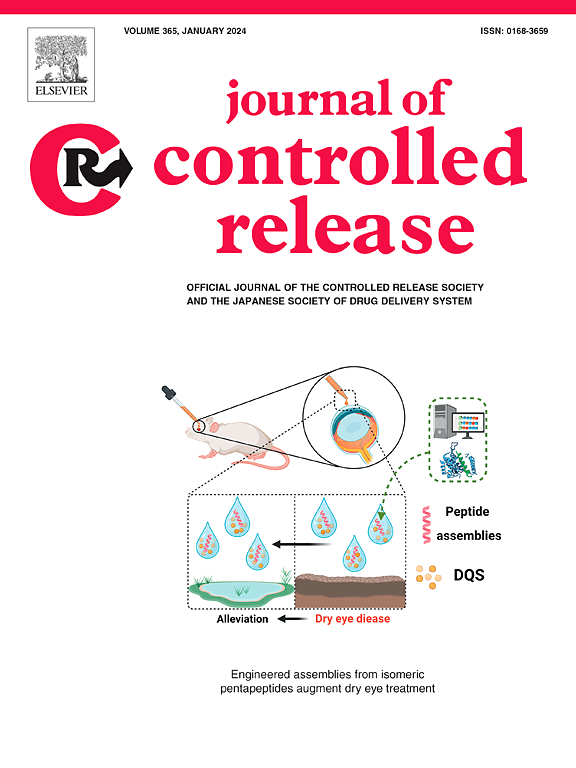Sustained release of a novel non-fibrate PPARα agonist from microparticles for neuroprotection in murine models of age-related macular degeneration
IF 10.5
1区 医学
Q1 CHEMISTRY, MULTIDISCIPLINARY
引用次数: 0
Abstract
Prior research has demonstrated the therapeutic potential of peroxisome proliferator-activated receptor α (PPARα) agonist fenofibrate on diabetic retinopathy. In the present study, a novel non-fibrate PPARα agonist, A190, was designed with higher potency and selectivity than fenofibrate in PPARα agonism. A190 was encapsulated in biodegradable microparticles (A190-MP) to ensure sustained drug release, with detection in the retina up to 6 months following a single intravitreal injection. A190-MP alleviated retinal dysfunction as shown by electroretinography in Vldlr−/− (wet-AMD model) and Abca4−/−/Rdh8−/− (dry-AMD model) mice. A190-MP also attenuated the decreases in cone photoreceptor density and outer nuclear layer thickness as demonstrated by optical coherence tomography and histology. Moreover, A190-MP reduced vascular leakage and neovascularization in Vldlr−/− mice, suggesting an anti-inflammatory and anti-angiogenic effect. A190-MP upregulated expression of PPARα, PGC1α, and TOMM20 in the retina of Vldlr−/− and Abca4−/−/Rdh8−/− mice. A190-MP also improved retinal mitochondrial function as shown by Seahorse analysis using retinal biopsy. In vitro, A190 attenuated oxidative stress and preserved cell viability in a photoreceptor-derived cell line exposed to 4-HNE and improved mitochondrial function, via a PPARα-dependent mechanism. These findings revealed sustained therapeutic effects of A190-MP in wet and dry AMD models, through improving mitochondrial function by activating PPARα.

求助全文
约1分钟内获得全文
求助全文
来源期刊

Journal of Controlled Release
医学-化学综合
CiteScore
18.50
自引率
5.60%
发文量
700
审稿时长
39 days
期刊介绍:
The Journal of Controlled Release (JCR) proudly serves as the Official Journal of the Controlled Release Society and the Japan Society of Drug Delivery System.
Dedicated to the broad field of delivery science and technology, JCR publishes high-quality research articles covering drug delivery systems and all facets of formulations. This includes the physicochemical and biological properties of drugs, design and characterization of dosage forms, release mechanisms, in vivo testing, and formulation research and development across pharmaceutical, diagnostic, agricultural, environmental, cosmetic, and food industries.
Priority is given to manuscripts that contribute to the fundamental understanding of principles or demonstrate the advantages of novel technologies in terms of safety and efficacy over current clinical standards. JCR strives to be a leading platform for advancements in delivery science and technology.
 求助内容:
求助内容: 应助结果提醒方式:
应助结果提醒方式:


